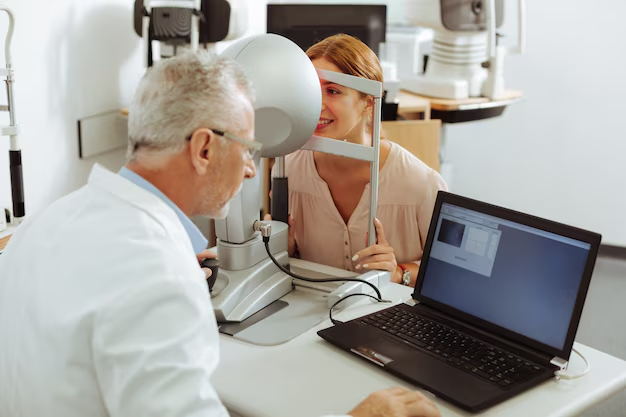Understanding Diabetes and Its Impact on Eye Health: What You Need to Know
Have you ever considered how interconnected our body systems truly are? For individuals living with diabetes, this concept becomes an undeniable reality, especially when examining the relationship between diabetes and eye health. While diabetes is primarily known for affecting blood sugar levels, its repercussions can extend far beyond, significantly impacting eye health. This exploration aims to provide an engaging, informative look into how diabetes influences the eyes, offering insights into prevention and management strategies to protect vision.
Exploring the Connection Between Diabetes and Eye Health
Diabetes can affect various parts of the body, and the eyes are particularly vulnerable. Understanding the ways in which diabetes impacts eye health can empower individuals to take proactive steps in preserving their vision. Diabetic retinopathy, cataracts, and glaucoma are some of the most common eye-related complications associated with diabetes.
Diabetic Retinopathy: The Silent Thief of Sight
Diabetic retinopathy is a condition that arises when high blood sugar levels cause damage to the blood vessels in the retina, the light-sensitive tissue at the back of the eye. Over time, these blood vessels can leak or become blocked, leading to vision impairment.
Stages of Diabetic Retinopathy:
- Non-proliferative: In this early stage, tiny areas of swelling within the blood vessels may cause them to leak fluid, leading to the formation of deposits in the retina.
- Proliferative: As the condition progresses, new, abnormal blood vessels may form on the surface of the retina, further increasing the risk of vision loss.
Key Insight: Regular eye examinations are crucial for individuals with diabetes to detect and address diabetic retinopathy early.
Cataracts: Clouding the Window of the Eye
While cataracts are common with aging, those with diabetes are at a higher risk of developing them earlier. Cataracts occur when the eye's lens becomes cloudy, causing blurred vision and making it difficult to see clearly.
Symptoms and Management:
- Symptom: A noticeable cloudiness in vision or a halo effect around lights.
- Management Tip: Regular eye check-ups and managing blood sugar levels can slow cataract progression.
Glaucoma: The Pressure Challenge
Individuals with diabetes are also at an increased risk for glaucoma, a condition characterized by elevated pressure within the eye that can damage the optic nerve. This damage can subsequently lead to vision loss if untreated.
Common Types:
- Open-angle glaucoma: This is the most common form, where the eye’s drainage canals become gradually clogged.
- Angle-closure glaucoma: This occurs when the iris is very close to the drainage angle in the eye, blocking fluid outflow.
Preventive Approach: Maintaining optimal blood sugar control and having regular eye examinations can play a pivotal role in managing this risk.
Proactive Steps to Protect Your Vision
Taking steps to maintain eye health is crucial for everyone, but especially for those managing diabetes. Here are some proactive strategies to consider:
Regular Eye Examinations
Routine eye exams are vital for early detection and management of eye complications related to diabetes. Eye care professionals can identify changes in the retina, lens, and other parts of the eye that may indicate issues.
The Frequency of Exams:
- Annual check-ups: For most individuals, an annual eye exam is recommended.
- More frequent visits: People showing signs of eye problems may need more frequent visits.
Blood Sugar Management
Keeping blood sugar levels within the target range can significantly impact eye health. Fluctuating or consistently high blood sugar levels can lead to multiple eye complications.
Diet and Exercise Tips:
- Balanced Diet: Focus on nutrient-rich foods and maintain a balanced carbohydrate intake to stabilize blood sugar levels.
- Regular Exercise: Incorporating regular physical activity can help manage blood glucose levels effectively.
Controlling Blood Pressure and Cholesterol
High blood pressure and cholesterol levels can exacerbate eye complications in individuals with diabetes. Managing these factors is crucial in preserving eye health.
Steps to Consider:
- Healthy Lifestyle Choices: Adopting a heart-healthy diet and regular physical activity.
- Medical Guidance: Consulting with healthcare providers to monitor and manage these parameters.
Avoiding Smoking
Smoking increases the risk of diabetic eye diseases. Quitting smoking can be beneficial not only for eye health but for overall well-being.
Eye Protection
Wearing sunglasses that block UV rays can safeguard your eyes from harmful sunlight, reducing the risk of cataracts and other eye issues.
Recognizing Symptoms Early
Being vigilant about any changes in vision is key to early intervention and treatment of eye conditions related to diabetes.
Warning Signs to Watch For:
- Blurry or fluctuating vision
- Sudden loss of vision
- Dark or floating spots in the vision
- Pain or pressure in the eyes
Acting promptly upon noticing these signs can prevent further damage.
Summary of Key Takeaways 📝
Here's a quick recap of practical steps to protect your eyes if you have diabetes:
- 🌟 Regular Eye Exams: Schedule annual or more frequent exams based on your eye health needs.
- 🌟 Blood Sugar Control: Maintain stable blood sugar through a balanced diet and exercise.
- 🌟 Blood Pressure & Cholesterol Management: Keep these levels in check for holistic health benefits.
- 🌟 Avoid Smoking: Ceasing smoking can significantly reduce eye health risks.
- 🌟 Eye Protection: Utilize sunglasses to protect eyes from UV rays.
Looking Ahead: Prioritizing Eye Health with Diabetes
It's clear that while diabetes poses challenges to eye health, informed steps and vigilant health practices can preserve vision and improve quality of life. Taking control of blood sugar, monitoring eye health regularly, and addressing any changes early can safeguard your sight. Remember, your eyes are windows to the world—nurturing them is an investment in the future.
By acknowledging the link between diabetes and eye health and adopting these proactive strategies, individuals can navigate the path to healthier, clearer vision.
